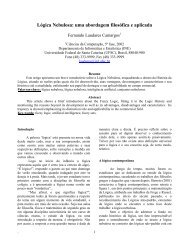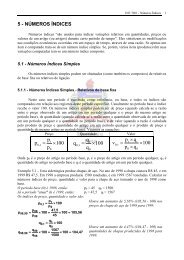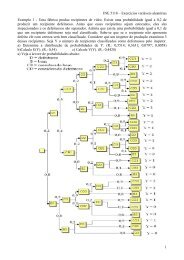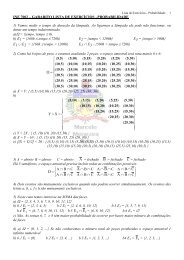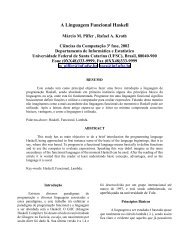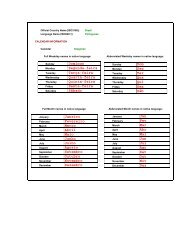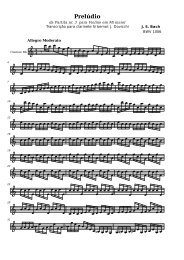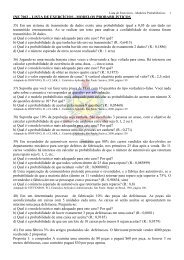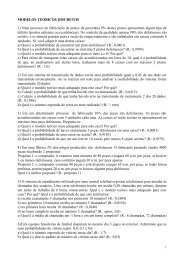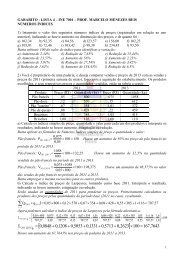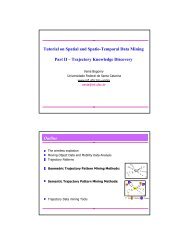Anais do IHC'2001 - Departamento de Informática e Estatística - UFSC
Anais do IHC'2001 - Departamento de Informática e Estatística - UFSC
Anais do IHC'2001 - Departamento de Informática e Estatística - UFSC
Create successful ePaper yourself
Turn your PDF publications into a flip-book with our unique Google optimized e-Paper software.
<strong>Anais</strong> <strong>do</strong> IHC’2001 - IV Workshop sobre Fatores Humanos em Sistemas Computacionais 239<br />
themselves be produced in iconic or in<strong>de</strong>xical form as well as in symbolic form. This<br />
condition is apparently necessary to ensure a continuum from DCM into RDCM interaction.<br />
2. What elements of the representation of a concept should be allowed to be manipulated<br />
—i.e., what controls (or handles) to manipulate, how to embed these controls in the<br />
visual structure, and in what or<strong>de</strong>r, if necessary, [should] they be manipulated?<br />
Visual co<strong>de</strong>s inclu<strong>de</strong> static and dynamic forms. Static forms are visualizations; dynamic<br />
forms are manipulations. So, a concept must not necessarily be represented by static forms<br />
alone ⎯ it can be represented by a manipulation of visual forms. The <strong>de</strong>cision on how to<br />
express the possibility of manipulation (typically by the use of a handle) is secondary to the<br />
<strong>de</strong>cision of which kind of manipulation pattern to use. An a<strong>de</strong>quate integration (or<br />
embedding) of signs of interactive possibilities into signs of <strong>do</strong>main concepts may not be<br />
an easy task.<br />
For instance, if learners are expected to acquire the appropriate grammatical knowledge for<br />
producing embed<strong>de</strong>d sentences with the pronoun whose in English, the use of DCM and<br />
RDCM interfaces is a major <strong>de</strong>sign challenge. Although advanced grammatical studies in<br />
Linguistics eventually lead learners to represent syntactic structures by means of trees or<br />
graphs, at the time this knowledge is taught to stu<strong>de</strong>nts the use of trees and graphs is<br />
excessively abstract. The alternative teaching aid is often one of resorting to metaphors,<br />
like bounding boxes around phrases, arrows directing the movement of syntactic<br />
constituents, and colored overwriting to indicate pronominal substitutions (see Figure 7).<br />
Figure 7: Visualizing embeddings of wh- clauses in english<br />
Thus, when building a DCM-RDCM interface for teaching a subject matter like this, a<br />
<strong>de</strong>signer should select some metaphoric expressions for the <strong>do</strong>main concepts and iteratively<br />
seek for an a<strong>de</strong>quate means to express interactive patterns that can be used with them. The<br />
cost of metaphoric expressions is a bigger cognitive effort required from learners, who will<br />
have to bridge the gap from metaphoric to abstract concept formulation without the help of<br />
the system. In the example above, learners should go from moving boxes and replacing<br />
constituents with pronouns to acquiring general extraposition and pronominalization<br />
principles for embedding wh- clauses into main sentences. Likewise, the or<strong>de</strong>r of<br />
manipulation should follow a path from narrower to wi<strong>de</strong>r gaps, supporting learners in the<br />
process of gaining increasing competence in producing abstract discourse about the general<br />
principles of the <strong>do</strong>main. In this respect, Lakoff’s theory of metaphor and cognitive<br />
ontology should be a resourceful instrument for supporting <strong>de</strong>sign <strong>de</strong>cisions.<br />
3. What type of mouse interaction protocol [should we] implement to direct learners<br />
attention towards the essential aspects of a concept?<br />
A semiotic revision of DCM and RDCM styles of interface for learnware seems to indicate<br />
that this issue cannot be treated in<strong>de</strong>pen<strong>de</strong>ntly of the former. In fact, mouse interaction<br />
protocols are part of the dynamic signs that will constitute the representation of concepts.



